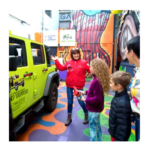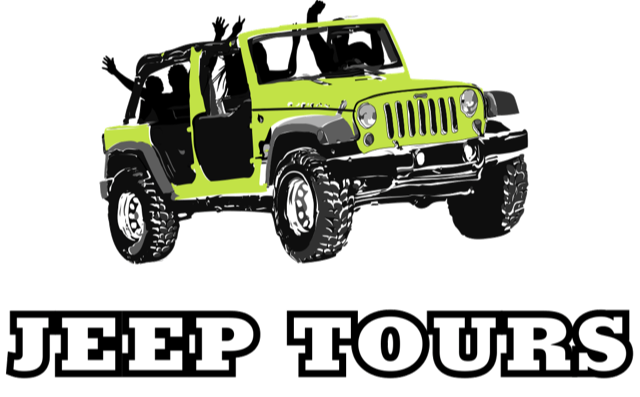CALL US! 1-415-766-2722
Fun@SanFranciscoJeepTours.com
The Fillmore District—affectionately called “the Moe” or simply “the Fill”—isn’t just a neighborhood. It’s a living timeline of San Francisco’s complex, colorful, and constantly evolving story.
Tucked between Van Ness Avenue and Divisadero Street, the Fillmore is a fascinating mix of past and present. Whether you’re a music buff, history lover, or foodie, a small group sightseeing tour through this historic district offers an unforgettable experience.
Hop aboard a private San Francisco Jeep Tour and let’s roll through time—jazz clubs, civil rights, cultural fusion, and all.
While much of San Francisco was left in ruins after the 1906 earthquake, the Fillmore District stood strong. This stroke of luck made it a magnet for displaced residents and new immigrants alike.
Rebuilt in resilience: With the downtown core in shambles, businesses and families relocated to the Fillmore.
A boom of culture: What started as refuge quickly turned into one of the city’s most culturally diverse hubs.
The Fillmore has long been a meeting point for cultures. Its story wouldn’t be complete without the people who shaped it.
Following the quake, Eastern European Jews made the Fillmore their home, bringing with them:
Synagogues and schools
A Yiddish Cultural Center
Kosher markets and small businesses
By the 1920s, the neighborhood had a thriving Japantown. But World War II changed everything:
Residents were sent to internment camps
Homes and businesses were lost
After the war, some families returned, rebuilding piece by piece
As the Japanese were removed, a new wave of residents arrived:
Thousands of African-Americans migrated from the South during WWII
They brought vibrant music, entrepreneurship, and culture
This influx turned the Fillmore into a jazz mecca
In the 1940s and ‘50s, the Fillmore was famously dubbed the “Harlem of the West.” Nightclubs pulsed with saxophones, snares, and soul.
Jimbo’s Bop City: A must-stop for jazz giants like Billie Holiday and Charlie Parker
Leola King’s Bird Cage: A hub for Black musicians and community pride
Texas Playhouse, Shelton’s Blue Mirror, Jack’s of Sutter: Each added their note to the Fillmore’s soundtrack
In the 1990s, the city attempted to honor this legacy with the Historic Fillmore Jazz Preservation District, which brought:
The Jazz Heritage Center
The San Francisco branch of Yoshi’s Jazz Club (now closed but fondly remembered)
Want to hear the echoes of saxophones past? A private Jeep ride down Fillmore Street is the best way to picture it all.
Starting in the late 1960s, city-led redevelopment projects—A-1 and A-2—sought to modernize the neighborhood.
But there was a cost:
Over 20,000 residents were displaced
2,500+ businesses were shuttered
Housing stock was demolished, replaced with modern complexes
Jazz clubs closed their doors
While some praised the effort as a crime-reduction strategy, others called it what it felt like: “Cultural removal.”
Today, the Fillmore reflects stark contrasts:
Revitalized commercial areas on Upper Fillmore
Gentrified apartments standing next to low-income housing
A shrinking footprint of the once vast Fillmore community
Still, locals continue to fight for cultural preservation—and your visit helps keep their stories alive.
 Private Jeep Tour – The Most Fun Way to See San Francisco!
Private Jeep Tour – The Most Fun Way to See San Francisco!Make your visit unforgettable with a Private Jeep Tour that takes you to San Francisco’s top attractions in an open-air adventure. Ride with your own guide, cross the Golden Gate Bridge, stop at stunning viewpoints, and explore hidden gems along the way. Whether it’s your first visit or your tenth, this is the most exciting way to experience the city!
Don’t miss out on this top-rated experience!—Book your Jeep tour today!
Despite its challenges, the Fillmore remains a beacon of strength, heritage, and celebration.
On Fillmore Street and you’ll find:
Boutique shops & ethnic eateries
Iconic bars and music spots
Art galleries and community centers
It’s the main artery of the neighborhood—and the perfect place to pause and explore.
Located at Fillmore & Geary, this world-renowned music venue once hosted:
The Grateful Dead
Jefferson Airplane
Janis Joplin
To this day, it remains a key stop on any San Francisco music lover’s bucket list.
Looking for local flavor? Here’s when to plan your visit:
Fillmore Street Jazz Festival (July): The West Coast’s largest free jazz fest
Juneteenth Festival (June 19): A powerful celebration of Black freedom and culture
Fillmore Fridays (Aug–Oct): Outdoor cinema, live music, and community vibes
Fillmore Farmer’s Market (Saturdays): Local produce + live jazz = a morning well spent
Over time, the Fillmore has morphed in geography and identity:
Downtown Fillmore (East): Closer to Civic Center, now part of Hayes Valley’s orbit
Uptown Fillmore (West): Becoming part of “Lower Pacific Heights”
Old Borders vs. New Realities: Once blended with Japantown and NoPa, but now distinct due to redevelopment lines
Still, locals and longtime visitors know: the spirit of the Fillmore isn’t bound by streets. It’s in the music, murals, and memories.
There’s no better way to explore San Francisco’s rich neighborhoods than with a local expert behind the wheel of an open-air Jeep.
On a Private San Francisco Jeep Tour, you’ll:
Cruise through key Fillmore landmarks
Hear stories of resilience, jazz, and community from your guide
Stop for photos at historical spots
Experience a customizable route tailored to your interests
Whether you’re curious about jazz history or want to dive deep into San Francisco’s cultural legacy, this is the ride for you.
What’s the best way to see the Fillmore District?
A private guided Jeep tour offers a flexible, immersive way to see the sights, hear the stories, and feel the soul of the neighborhood.
Can I explore the Fillmore’s jazz history today?
Yes! While many old clubs are gone, landmarks like the Fillmore Auditorium and the Jazz Heritage Center keep the vibe alive. The annual jazz festival is a must-see.
What happened to Yoshi’s SF?
Though it closed in 2014, Yoshi’s SF was once a vital part of jazz preservation in the Fillmore. Its spirit lives on in community events and venues.
Is the Fillmore District safe to visit?
Like many urban areas, it’s best to explore during daylight or with a local guide. Our Jeep tours are perfect for first-time visitors.
When is the best time to go?
Summertime is ideal, especially during festival season. But year-round, the neighborhood’s history and culture shine.
From jazz legends to cultural resilience, the Fillmore District is one of San Francisco’s most soulful and complex neighborhoods.
Don’t just read about it—experience it.
Book your Private San Francisco Jeep Tour today and step into a chapter of history that still sings through the streets.
